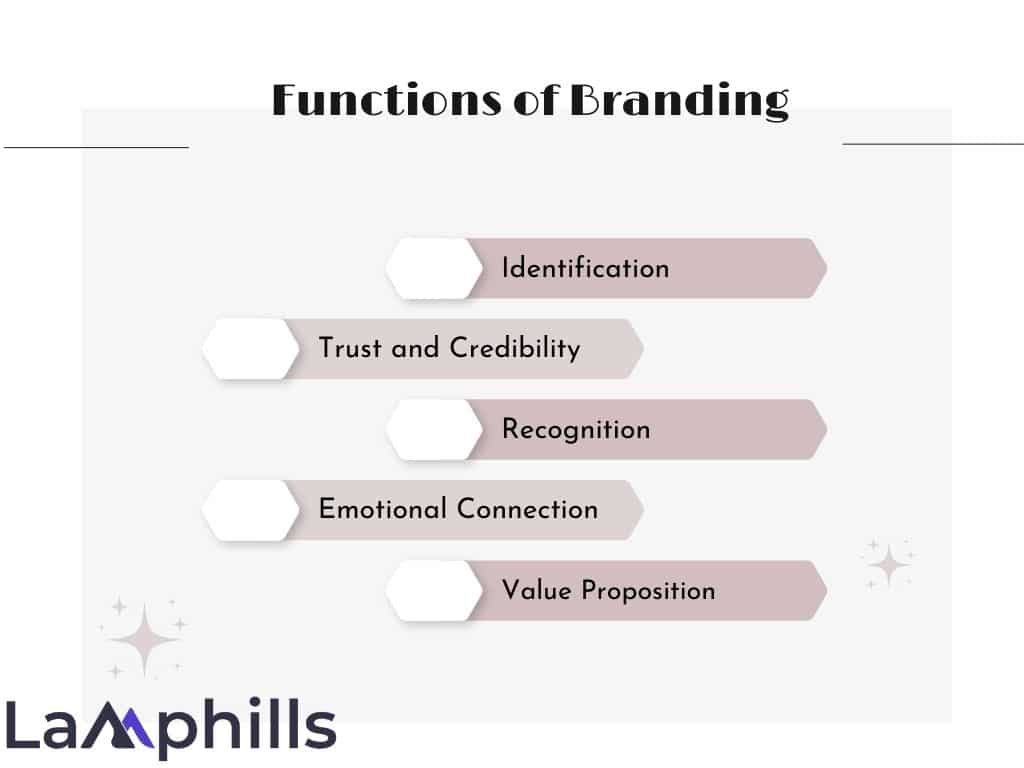What do you think is the difference between branding vs packaging? And why do you think they are both required for a successful business? Just imagine you’re wandering through a lively market in Lagos. You spot a stall selling refreshing drinks. One bottle stands out with its eye-catching label and bold design, while another blends in with a plain look. The difference isn’t just in the drink but in how it’s presented and perceived.
Branding and packaging are like two sides of a coin in this bustling scene. Branding is the story behind that colorful label—the values, personality, and trust that make you reach for that particular drink. Packaging, on the other hand, is what catches your eye first: the design, the protection, and the practicality of the bottle.
In this article, I will explain the meaning of branding vs packaging, the differences between them, and their various functions.
Key Points
- Branding focuses on creating a unique identity for a business through elements like logos, colors, and messaging. It aims to build trust and emotional connections with customers, establishing a long-term relationship by resonating with their values and expectations.
- Packaging is designed to protect the product and ensure its safe transportation. It also plays a crucial role in marketing by enhancing visual appeal and providing essential information. Effective packaging combines functionality with attractiveness to improve the customer experience and product presentation.
- While branding aims to establish a brand’s identity and emotional appeal, packaging focuses on practical aspects such as protection, convenience, and visual impact. Both are crucial in their own right; branding drives customer loyalty and recognition, whereas packaging enhances product safety and shelf appeal.
What Is Branding?
Branding creates a relationship between a business and its audience, helping people identify the business, its value, and its unique features. It tells a story, establishing trust and loyalty. and creating customer expectations. Branding is a continuous process, adapting to changing consumer needs.
A branding strategy creates a unique name, logo, and image to grasp customer attention, distinguish products, and build trust. It leaves an impression, sets expectations, and is a marketing tool. Branding gives a firm a personality, making it accessible and recognized. It establishes long-term relationships with customers by identifying their changing needs and supplying satisfying products. Branding makes products identifiable, creates awareness, and builds brand value.
What Is Packaging?
Packaging is a creative process to produce attractive covers, packets, or wrappers that protect products from damage. It’s an essential part of marketing, serving as the first encounter with customers. Primary purposes include brand identification and safe transportation. Packaging involves designing containers, labels, and materials for safe handling, transportation, and presentation. Good packaging ensures product protection and visual appeal.
Packaging is the process of designing attractive packets, wrappers, or covers for containing, handling, and protecting products. It’s the first thing customers encounter and plays a crucial role in marketing, highlighting brands, and providing product information.
Differences Between Branding and Packaging
Branding and packaging serve different purposes in promoting a product. Branding aims to establish a unique identity and emotional connection with customers by emphasizing a company’s values, mission, and promise. It consists of logos, colors, fonts, messaging, and brand imagery that influence consumer perceptions and loyalty. Branding seeks to create an emotional bond between the brand and consumers, often remaining relatively consistent over time.
On the other hand, packaging focuses on protecting, containing, and presenting the product effectively. It comprises materials, design, labels, and product information that concentrate on physical protection and practicality. Packaging influences the visual appeal and practicality of the product, primarily serving functional and informational needs.
While branding helps a brand stand out in a crowded marketplace, packaging enhances the product’s shelf presence and competitiveness. Branding can adapt to changes in consumer preferences and market dynamics, whereas packaging may need adjustments to accommodate different product sizes and types.
Examples of effective branding include Nike’s iconic “swoosh” logo and “Just Do It” slogan, which creates an emotional connection with customers. A sturdy, eco-friendly cereal box with nutritional information is an example of effective packaging that prioritizes practicality and functionality.
Functions of Branding vs. Packaging
Branding and packaging, though similar, have different functions they perform for a business. Some of these functions include:
Functions of Branding include:

#1. Identification
Branding helps with identification. When you brand your product with a unique logo and color scheme, it helps customers recognize your product on store shelves, making it easier for them to choose your product over competitors. This immediate recognition simplifies the decision-making process for consumers, allowing them to choose your product over similar ones offered by competitors. In essence, effective branding ensures that your product not only captures attention but also creates a lasting impression in the minds of your customers. I don’t know if it’s just me, but whenever I enter a mall, I look for my items by their packaging, either their logo or a particular color.
#2. Trust and Credibility
Branding builds trust and credibility. When you consistently deliver high-quality products and services, your brand becomes synonymous with reliability, making customers more likely to trust your brand. This trust isn’t built on just branding; you have to be consistent with the quality you provide. As the brand consistently meets or exceeds your expectations, it solidifies its reputation as a reliable choice in the marketplace. Consequently, customers are more likely to choose this brand over others because they associate it with reliability and quality.
#3. Recognition
Branding enhances recognition. For example, when you create a distinctive brand voice and visual identity, it makes your brand more memorable, making it easier for customers to recall your brand when making purchasing decisions. When it comes time to make a purchasing decision, you’re more likely to recall this distinctive brand’s catchy slogan and vibrant colors in all its advertising materials and choose it over others simply because it stands out and feels familiar.
#4. Emotional Connection
Branding fosters emotional connections. When you create a brand that resonates with customers’ values and emotions, it creates a deeper connection, making customers more loyal to your brand. This connection goes beyond mere transactions; it creates a sense of loyalty and attachment. Customers who feel emotionally connected to a brand are more likely to remain loyal, advocate for it, and choose it over competitors, even if it means paying a bit more. Personally, I can’t patronize a brand that doesn’t connect with me emotionally.
#5. Value Proposition
Branding communicates your value proposition. When you clearly define your brand’s purpose and values, it helps customers understand what sets your brand apart, making it easier for them to choose your brand over competitors.
Functions of Packaging include:
#1. Product Protection
Packaging protects products. When you use sturdy materials and clever design, it safeguards your product during transportation and storage, ensuring it arrives safely in customers’ hands. One thing a brand shouldn’t play with is its packaging. If the packaging is designed with sturdy materials and smart features, it acts as a shield, preventing damage during transportation and storage.
#2. Information and Identification
Packaging provides essential information. When you include clear labeling and instructions, it helps customers understand your product’s features and benefits, making it easier for them to use and enjoy. This is to say that branding is not the only thing that helps with brand identification; packaging also helps. A well-labeled package might include the product’s name, key features, and usage instructions, all presented in a clear, easy-to-read format. This makes it easier for you to discern the product’s value and how it fits your needs.
#3. Convenience
Packaging enhances convenience. For example, when you design easy-to-open and easy-to-use packaging, it makes customers’ lives easier, making them more likely to choose your product. Such thoughtful design elements not only make the product more convenient to use but also add to the overall satisfaction of the customer. I will always say this to my people: if a product is made with ease of use in mind, it not only improves the customer’s experience but also increases the likelihood that they will choose your product again in the future.
#4. Marketing and Promotion
Packaging serves as a marketing tool. For instance, when you create eye-catching packaging designs, it grabs customers’ attention, making them more likely to notice and choose your product.
#5. Sustainability
Packaging prioritizes sustainability. When you use eco-friendly materials and minimal packaging, it reduces waste and appeals to environmentally conscious customers, enhancing your brand’s reputation. I think this is one of the easiest ways to get world recognition for your brand.
Over here, I have created a FREE Sustainability Checklist for Packaging to help with the whole process:
Sustainability in Packaging Checklist.PDF
What Is the Purpose of Branding and Packaging?
Packaging not only tells customers about your product, but it also tells them about your company, albeit in a more subtle way. You can actually say a lot about your company with your packaging. For example, if you use expensive and high-end packaging, you’re communicating that you’re a high-end brand.
What are Branding and Packaging Decisions in Marketing?
Branding and packaging decisions involve choosing a brand strategy, positioning the product, and selecting appropriate packaging. Key branding decisions include selecting a brand name and a brand promoter. Positioning involves creating an image or identity for the product in customers’ minds.
How Does Branding Affect Packaging?
The packaging reflects your brand and is sometimes the first thing buyers see. It’s vital that your packaging corresponds with your company’s identity and values. Your brand’s packaging should convey its values, objectives, and unique selling characteristics.
Conclusion
In conclusion, as much as there is a difference between branding vs packaging, both are essential to your business and are required for the necessary growth. In this article, I gave a detailed explanation of branding vs packaging, which will help you know when to use either of them in your business.
Related Articles
- The Power Duo: How Branding & Promotion Drive Massive Growth
- Branding Like a Boss: How to Make Your Brand Unforgettable
- How to Create a Brand Strategy That Outshines Your Competition
- Brand Brief: A Comprehensive Guide to Creating an Effective One





